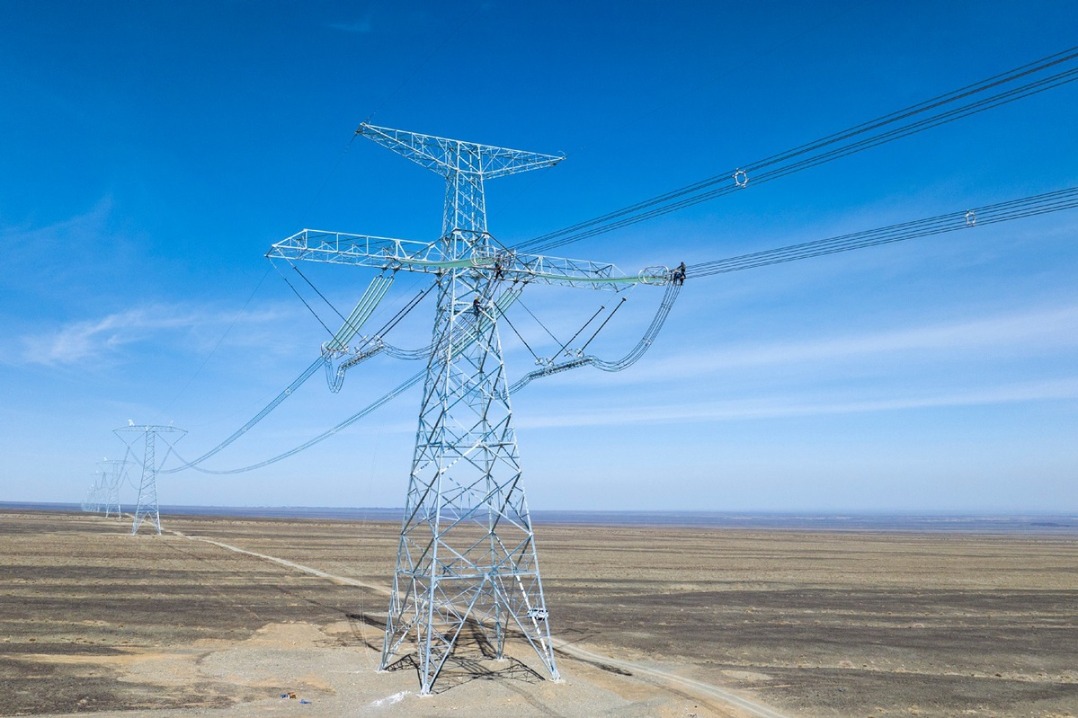Dealing with aging society


Government needs to lead economic and social development to ensure fair distribution of the dividends to the elderly
China has made great achievements in building a moderately prosperous society in all respects. At the same time, a significant demographic change is taking place-its population is rapidly aging. The aging trend presents opportunities as well as challenges. The fundamental approach to deal with the aging population is a sustainable economy. China is entering a new stage of high-quality development that must be sustainable and efficient, so that it can steadily increase its wealth reserves to tackle the problems brought by its aging society.
China faces the problem of an aging population before it has become a developed country. Population aging is a natural result of economic and social progress. When its society began aging in 2000, China's GDP exceeded $1 trillion for the first time, but its per capita GDP was less than $1,000.People had overcome basic living problems, but China was still a low-income country.
Reform and opening-up over the past 40 years have enabled the country's rapid economic growth and enhanced its comprehensive strength, as well as improvement of people's livelihood. In 2010, China's GDP exceeded $6 trillion, making it the second-largest economy in the world, and its per capita GDP increased to $4,550.Another decade has passed, and its annual GDP has reached over 100 trillion yuan ($14 trillion), with the per capita GDP surpassing $10,000. In addition, the country's human development index increased to 0.758 in 2019, and the strong human development performance put the country in the high human development category. It means that the gap in economic and social development between China and developed countries has narrowed. Nonetheless it has not yet caught up with them, while the rate at which the population is aging is accelerating.
The aging population runs parallel with deepening reform and opening-up and building a moderately prosperous society in all respects. China has lowered its economic growth rate target to around 6 percent from the previous average growth of 10 percent, emphasizing high-quality development rather than rapid growth. Looking ahead, China will basically achieve modernization by 2035 and will develop into a great modern socialist country by the middle of the 21st century. The two stages represent a social transition from an advanced aging stage to a severe level. The degree of China's aging will surpass that of developed countries such as the United States and those in Europe.
Population aging is an irreversible trend. Making economic and social development to adapt to the change is the solution to this challenge, which calls for improved engines of economic growth in terms of capital, technology, labor and efficiency. As the government works on industrialization, informationization and urbanization, significant changes have taken place, including improved workforce quality, enhanced human resources, increased economic and social capital, advanced technology and the application of artificial intelligence. Meanwhile, the negative impact of the shrinking supply of labor on economic growth has been reduced as labor-intensive industries are gradually replaced by capital and technology-intensive industries. The development and utilization of human capital can therefore help society face the aging population.
Economic development is a critical approach to improving people's livelihoods. It is necessary to build a multi-tier pension system, improve the medical security system and implement long-term care insurance, and develop other social welfare and assistance systems. These are basic approaches to ensure fair distribution of the dividends of economic development and raise people's standard of living.
Along with market-oriented economic reform, the social security system undertook significant changes in the 1990s, combining social pooling and personal accounts, and laid a foundation for the construction of a social security system with Chinese characteristics. However, problems such as imperfect payout and poor management of social security funds, regional policy differences, limited coverage and low standards have resulted in the system's inability to meet the demands of senior citizens to live happily in their old age, especially those in rural areas.
Since 2000, the authorities have adjusted the proportions of the social pool and personal accounts, established enterprise annuities, and improved the social endowment system in rural areas according to economic and social progress and the increasingly rapid aging of the population. Reforms of the urban and rural medical security system, public policies and the housing system have also become priorities. They are also exploring ways to improve the long-term care system and promote the integration of medical and nursing services. Commercial insurance provides another option for people, shrinking the gap between urban and rural residents.
In 2019, the number of participants in the basic pension scheme for enterprise employees, pension system and medical insurance respectively reached 435 million, 533 million and 1.35 billion. That means the social security system covers almost the entire Chinese population, and people's health is ensured with improved medical care, which is essential preparation to cope with the aging society.
The essence of dealing with the issues of aging is economic development and making a bigger economic cake, and dealing with the problem of the elderly is the development of people's livelihood and the distribution of the economic cake. So, responding to the aging issue, economic development serves as the basis and equitable distribution ensures a sense of fulfillment, happiness and security that are founded on social equity and justice.
The author is director and a professor of the Research Center for Strategic Studies on Aging and Development at Nankai University. The author contributed this article to China Watch, a think tank powered by China Daily.


































